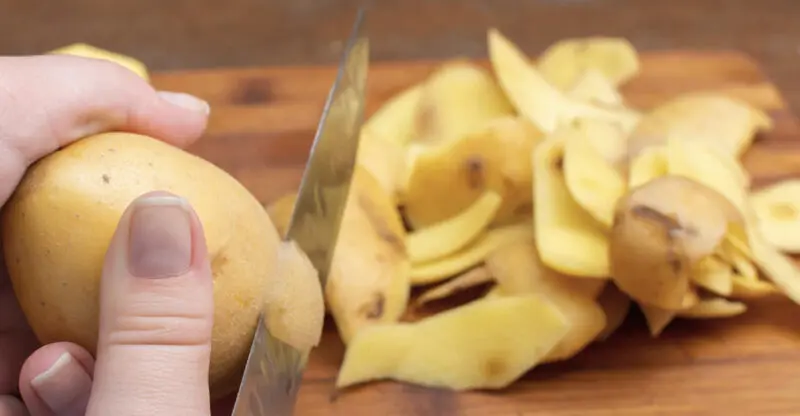Potato peels, often discarded as waste, hold a secret treasure trove of nutrients beneficial for your garden. This humble kitchen scrap can be a sustainable and economical way to enrich your soil and boost plant health. In this article, we’ll explore how to harness the power of potato peels to enhance your gardening practices, ensuring your plants thrive.
Why Potato Peels?
Potato peels are rich in essential nutrients that plants crave, including potassium, phosphorus, magnesium, and calcium. These elements play a crucial role in promoting healthy plant growth, improving root development, and aiding in photosynthesis. By incorporating potato peels into your garden, you’re not only recycling kitchen waste but also providing your plants with a natural, chemical-free nutrient boost.
Ways to Use Potato Peels in Your Garden:
- Composting: Potato peels can be added to your compost bin, where they’ll break down and enrich the compost with nutrients. Ensure your compost is well-aerated and moist to speed up the decomposition process. Avoid composting peels from sprouted or green potatoes, as they contain solanine, which can be toxic to plants in large quantities.
- Potato Peel Tea: Create a nutrient-rich liquid fertilizer by boiling potato peels in water. Here’s how:
- Boil a handful of clean potato peels in a gallon of water for a few minutes.
- Let the mixture cool, then strain it.
- Use the liquid to water your plants, providing them with a quick nutrient boost.
- Direct Mulching: Dried potato peels can be used as mulch around your plants. This method is beneficial for suppressing weeds, retaining soil moisture, and gradually releasing nutrients into the soil as the peels decompose. Ensure the peels are fully dry to prevent them from rotting or attracting pests.
- Potato Peel Powder: Dry your potato peels completely in an oven or dehydrator, then grind them into a fine powder. Sprinkle this powder around your plants or mix it into the soil. It acts as a slow-release fertilizer, providing a steady supply of nutrients to your plants.
Benefits for Plants:
- Improved Soil Health: Potato peels add organic matter to the soil, improving its structure, water retention, and aeration.
- Nutrient Boost: The nutrients in potato peels are essential for the overall health and growth of plants, encouraging robust root systems and vibrant blooms.
- Sustainable Gardening: Using potato peels as fertilizer reduces kitchen waste and minimizes the need for chemical fertilizers, making your gardening practices more eco-friendly.
Precautions:
- Pest Attraction: Fresh potato peels might attract pests. To avoid this, consider using them in compost or as a liquid fertilizer rather than directly on the soil.
- Disease Transmission: Avoid using peels from potatoes that were diseased, as this could spread pathogens to your garden.
Conclusion:
Potato peels offer a simple yet effective way to enrich your garden naturally. Whether you compost them, brew a nutrient tea, use them as mulch, or create a potent powder, these peels can contribute significantly to your garden’s health. Embrace this eco-friendly method to not only benefit your plants but also reduce kitchen waste, embodying the essence of sustainable gardening. Let the humble potato peel elevate your gardening game, nurturing a thriving, vibrant garden.

